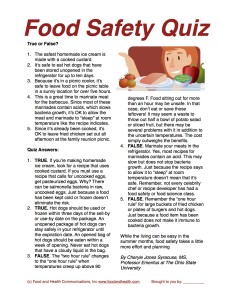A new study out of Boston suggests that focusing on 10 specific foods in your diet may cut the risk of premature death from diabetes, stroke, and cardiovascular disease by almost half.
The author of the study, Renata Micha from the Friedman School of Nutrition Science and Policy at Tufts University says that about 45% of US deaths in 2012 could be traced to eating too little or too much of certain foods. Her study draws information from previous research done using National Health and Nutrition Examination surveys from 1999 to 2002 and 2009 to 2012. The researchers used food diaries of participants and found that 318,656 deaths out of 702,308 from stroke, heart disease, or type 2 diabetes were based on people eating too much or too little of the following 10 foods or food elements…
Too Much:
- Sodium
- Unprocessed red meat
- Processed red meat (sausage, bacon, hot dogs)
- Soybean and corn oil
- Sugar-sweetened drinks
Too Little:
- Fruits
- Vegetables
- Whole grains
- Nuts and seeds
- Seafood with omega-3 fatty acids
For example, consuming too much sodium was linked with 66,508 deaths. Poor nut and seed intake was associated with 59,374 deaths. Processed read meat intake was associated with 57,766 deaths, while 54,626 deaths were linked with inadequate fatty fish intake. Minimal vegetable and fruit intake was linked to 53,410 and 52,547 deaths, respectively. Sugar-sweetened drinks were tied to 51,695 deaths.
Demographics also made a difference. For example, men and women fared differently in the study. Women were less likely than men to die from poor diets and younger people were at higher risk than older individuals. Hispanics and blacks had higher risk than whites, and individuals with less education were at higher risk than more educated people.
Deaths from cardiovascular disease decreased by 25% between the two survey periods because of improvements in dietary habits such as eating more polyunsaturated fats, nuts, seeds, whole grains, fruits, and fewer sugar-sweetened drinks.
Consumers can reduce their risk for chronic disease by adopting one dietary habit at a time (such as eating fatty fish twice per week or choosing water over sweetened beverages) and then moving on to another positive habit once they’ve mastered the first. This helps build confidence and motivate people to continue building healthful eating patterns to reduce their risk of chronic disease.
By Lisa Andrews, MED, RD, LD
References:
- Micha, Renata, PhD, Penalvo Jose, PhD, Cudhea PhD, et. al. Association Between Dietary Factors and Mortality From Heart Disease, Stroke, and Type 2 Diabetes in the United States. JAMA. 2017;317(9):912-924
- Mueller, Noel T., PhD, MPH, Appel, Lawrence J. Attributing Death to Diet Precision Counts. JAMA. 2017;317(9):908-909.






